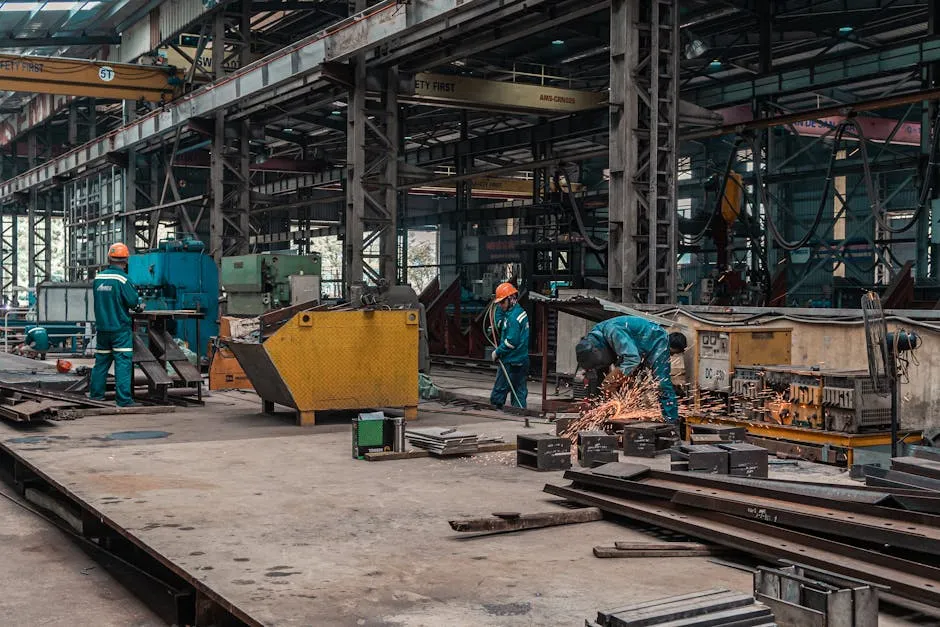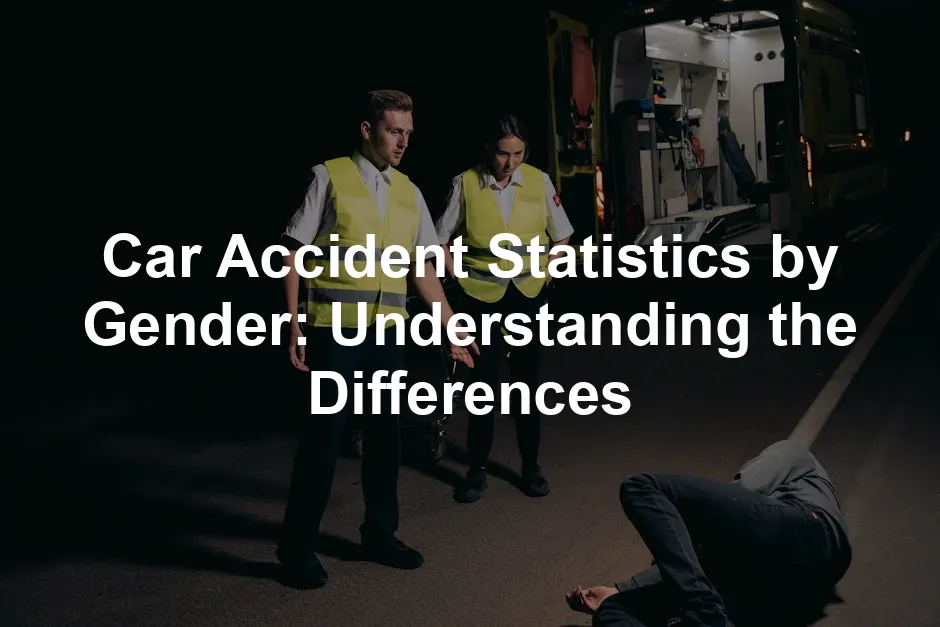Introduction
Understanding car accident statistics by gender is crucial for several reasons. First, it sheds light on driving behaviors and tendencies associated with each gender. This knowledge can inform targeted safety measures and public policies aimed at reducing accident rates. Second, as car accidents remain a leading cause of injury and death, recognizing how gender influences these statistics can lead to better protective measures for all drivers.
The debate about whether men or women are more involved in car accidents has been ongoing for years. Traditionally, statistics have shown men are more likely to be involved in crashes. However, women often face more severe consequences when accidents do occur. This article will explore various statistics, factors, and implications surrounding gender differences in car accidents, aiming to uncover the truth behind these trends.
We’ll analyze data from reputable sources, highlight key differences in accident involvement, and discuss the societal implications of these findings. By examining these statistics closely, we can gain a deeper understanding of how gender impacts car accident rates.

Section 1: Gender Differences in Car Accident Involvement
Overview of Statistics
When we look closely at car accident involvement rates, men clearly lead the statistics. According to the National Highway Traffic Safety Administration (NHTSA), approximately 5.39 million male drivers were involved in crashes, compared to 3.72 million female drivers. This disparity raises eyebrows and invites discussion about driving behaviors among men and women.
Fatality rates further illustrate this divide. An alarming 75% of fatal crashes involve male drivers. The statistics suggest that not only are men more frequently involved in accidents, but the outcomes tend to be more severe as well. Crashes featuring male drivers are often deadlier, highlighting the need for increased awareness and preventive measures.
Interestingly, while men dominate the overall accident statistics, women are often found to suffer more significant injuries in crashes. Women face a 73% higher likelihood of injury and a 17% greater chance of death in accidents compared to men. This paradox raises questions about the factors contributing to these alarming statistics and underscores the importance of understanding gender dynamics in car accidents.
As a driver, ensuring you have the right tools in your vehicle can make a world of difference in emergencies. A Car Emergency Kit is essential for every vehicle. It provides peace of mind knowing you are prepared for unexpected situations, from flat tires to minor medical emergencies.
The data paints a vivid picture of the gender gap in car crash statistics. As we continue to explore this topic, we’ll delve into the nuances of these findings and examine the possible reasons behind the observed trends. Understanding these differences not only informs public safety initiatives but also encourages drivers of all genders to adopt safer driving practices.
To gain further insights into the gender disparities in car accidents, you can explore detailed statistics in this article on motorcycle vs car accident statistics.

Fatality Rates and Severity of Crashes
When we examine fatal crash statistics, a clear trend emerges. Men are more likely to be involved in fatal motor vehicle accidents than women. According to recent data, male drivers account for a staggering 75% of all fatal crashes. This statistic raises critical questions about the driving behaviors and circumstances that lead to such outcomes.
However, the story doesn’t end there. While men may dominate the fatality statistics, women often face more severe injuries when accidents occur. In fact, findings show that women are 73% more likely to be injured in a crash and 17% more likely to die in one compared to their male counterparts. This paradox is both alarming and thought-provoking, as it suggests that while men are more frequently involved in crashes, women bear the brunt of the consequences.
The nature of the injuries sustained also varies significantly between genders. Women tend to suffer from more serious injuries, particularly in frontal and side-impact collisions. This can be attributed to several factors, including differences in vehicle choice and safety features. Women often drive smaller vehicles, which may not provide the same level of protection as the larger trucks and SUVs that many men favor.
Moreover, the circumstances surrounding these crashes often involve risky behaviors. Men are more prone to aggressive driving practices, such as speeding and driving under the influence. These behaviors not only increase the likelihood of crashes but also contribute to the severity of the outcomes. In contrast, women are generally more cautious behind the wheel, which may contribute to their increased vulnerability in accidents despite driving fewer miles on average.
Understanding these statistics is vital for shaping effective safety measures. While both genders face risks on the road, the differences in crash involvement and injury outcomes highlight the need for targeted approaches in driver education and vehicle safety design. By addressing these disparities, we can work toward reducing the overall rates of injuries and fatalities on our roads.
Speaking of safety, a First Aid Kit for Cars can be a lifesaver in emergencies. It’s always better to be prepared than to scramble when an accident occurs.

Vehicle Choices and Safety
When it comes to vehicle choices, men and women often steer in different directions. Men are more likely to drive larger, heavier vehicles. Think of those beefy trucks and SUVs that seem to dominate the parking lots. This preference can provide added protection during crashes. After all, a 5,000-pound vehicle has a better chance of shrugging off an impact than a compact car weighing in at a mere 2,500 pounds.
On the flip side, women often gravitate towards smaller vehicles. While these cars may be stylish and fuel-efficient, they typically lack the robust safety features found in larger models. A small car in a collision with a bigger vehicle? Not exactly a fair fight. In fact, studies indicate that women are 73% more likely to be injured in a crash and 17% more likely to die compared to men. This discrepancy raises eyebrows and begs the question: is vehicle choice playing a role?
Let’s talk about design, too. The structure of a vehicle can significantly affect injury outcomes. Larger vehicles often have crumple zones designed to absorb impact, while smaller cars may not fare as well. This difference in design can lead to worse injury outcomes for women, who tend to drive smaller cars more frequently.
Interestingly, the safety gap between genders is narrowing. Modern vehicles come equipped with advanced safety features that provide better protection for all occupants. But the underlying trends still point to a stark contrast in vehicle choices and the resulting implications for safety.
In essence, vehicle choices impact safety outcomes more than we might think. Men, driving heavier vehicles, may enjoy a safety cushion during accidents, while women find themselves at a higher risk. This highlights the importance of understanding how vehicle type and design factor into the broader conversation about car accident statistics by gender.

Section 3: Age and Gender Dynamics in Car Accidents
Age Groups and Crash Statistics
Car accidents are a rite of passage for many young drivers, but the statistics reveal a clear pattern. Young males, particularly those aged 16 to 29, are at a higher risk of being involved in crashes compared to their female counterparts. In fact, males in this age group have a staggering 63% higher crash involvement rate than females.
Why the disparity? Well, younger men tend to engage in riskier behaviors, such as speeding and not wearing seat belts. When you couple this with their tendency to drive more miles, it’s no wonder they dominate accident statistics. In a nutshell, the thrill-seeking nature of youth and a dash of bravado can lead to a recipe for disaster.
On the other hand, young females, while still at risk, typically engage in more cautious driving behaviors. They may be less likely to speed or drive under the influence, which helps explain the lower accident rates among young women. However, this doesn’t mean they are immune to accidents—far from it.
Statistics reflect that young males are the leading cause of severe crashes, often resulting in fatalities. Understanding the age dynamics is crucial for addressing safety measures. By focusing on high-risk age groups, targeted campaigns can be designed to mitigate risks for young male drivers.
Speaking of safety, having a Dash Cam can provide crucial evidence in the event of an accident. It’s like having a witness that never leaves your side!

Impact of Alcohol and Impairment
Alcohol remains a significant factor in car accidents, and the statistics are telling. Males are overwhelmingly more likely to drive under the influence. Reports show that 80% of all DUI incidents involve male drivers. This trend raises eyebrows and highlights the need for more stringent measures against impaired driving.
When we look at blood alcohol concentration (BAC) levels in fatal crashes, the numbers reveal a stark contrast between genders. Males consistently account for a higher percentage of fatalities linked to high BAC levels. For example, in 2022, male drivers made up 72% of fatally injured drivers with BACs of 0.08% or more.
The implications are serious. Alcohol impairs judgment, slows reaction times, and increases the likelihood of risky behaviors. The combination of male drivers and alcohol creates a perfect storm for accident involvement.
As we analyze the statistics, it becomes clear that addressing alcohol-related crash trends is paramount. Public awareness campaigns targeting male drivers could significantly reduce the incidence of impaired driving.
In conclusion, understanding the dynamics of age and gender in car accidents reveals key insights into crash statistics. By recognizing the patterns and behaviors that lead to higher accident rates, we can work towards safer roads for everyone.

Section 4: Societal Implications and Safety Measures
Addressing Gender Disparities in Safety
The gender gap in car accident statistics poses significant implications for public safety policies. With men involved in a higher percentage of crashes, especially fatal ones, it’s essential to tailor safety initiatives that address these disparities effectively. Statistics reveal that young males, in particular, are at a greater risk due to their driving behaviors.
Targeted driver education programs can significantly impact this high-risk group. By focusing on young male drivers, we can promote safer habits, reducing risky behaviors like speeding and driving under the influence. Engaging young men in discussions about the consequences of reckless driving can foster greater awareness and responsibility.
Furthermore, integrating these safety measures into school programs can lay the groundwork for lifelong responsible driving practices. Imagine high school students participating in interactive workshops that highlight the dangers of distracted and impaired driving. It’s a proactive approach that could save lives and promote safer roads.
Policy changes can also enhance public safety. Stricter regulations on high-risk driving behaviors, along with increased penalties for violations, could serve as deterrents. Campaigns that highlight the dangers of speeding and DUI could be paired with community outreach programs to educate young drivers about the consequences of their actions.
Additionally, having a Portable Jump Starter in your vehicle can save you from being stranded due to a dead battery. It’s a small investment for a huge peace of mind.

The Role of Car Manufacturers
Car manufacturers play a pivotal role in bridging the safety gap between genders. Historically, vehicle safety design has favored male physiology, leaving women at a disadvantage in terms of protection during crashes. This oversight needs urgent attention.
To better protect all genders, manufacturers should invest in inclusive safety testing. This means utilizing crash test dummies that better represent female bodies in terms of size and weight. By doing so, manufacturers can design cars that provide enhanced protection for everyone, irrespective of their gender.
Moreover, adopting advanced safety features such as automatic emergency braking and lane departure warnings can greatly benefit all drivers. These technologies help mitigate the impact of human error, a factor that remains a leading cause of accidents.
Incorporating real-world data into safety design can also lead to better outcomes. For instance, analyzing crash statistics by gender can inform manufacturers about specific vulnerabilities. If women are more likely to sustain injuries in side-impact collisions, car designs can be modified to enhance side protection features.
By fostering collaboration between safety advocates and manufacturers, we can advocate for policies that prioritize inclusive safety standards. The goal is not just to innovate but to ensure that innovation leads to safer roads for everyone.
For those looking to keep their vehicles in top shape, a Vehicle Maintenance Log Book can help track all your car’s essential services and repairs.

FAQs
Who causes more car accidents, men or women?
Statistics reveal that men are more often involved in car accidents. The National Highway Traffic Safety Administration (NHTSA) reports approximately 5.39 million male drivers in crashes compared to 3.72 million female drivers. However, women frequently suffer more severe consequences. Research indicates that while men dominate accident rates, women are 73% more likely to be injured and 17% more likely to die from a crash. This paradox highlights the need for a closer look at both gender differences and driving behaviors.
What factors contribute to the higher accident rates among men?
Several factors explain the higher accident rates among men. First, men tend to engage in riskier driving behaviors. Speeding, driving under the influence, and neglecting seat belts are more common among male drivers. Furthermore, men also drive more miles annually—averaging 16,550 miles compared to women’s 10,142 miles. This increased exposure significantly raises their likelihood of being involved in accidents. Additionally, the types of vehicles driven by men, often larger and heavier, can influence crash outcomes.
Are young drivers at a higher risk for accidents?
Yes, young drivers, particularly males aged 16 to 29, face a higher risk of accidents. Young men have a crash involvement rate 63% higher than their female counterparts. High-risk behaviors, such as speeding and reckless driving, contribute to this disparity. The thrill-seeking nature of youth can lead to dangerous driving choices, making this demographic particularly vulnerable. Understanding these trends is crucial for developing targeted safety campaigns.
How do vehicle safety designs affect outcomes for male and female drivers?
Vehicle safety designs play a critical role in crash outcomes for all drivers. Historically, safety testing has favored male physiology, leading to designs that may not adequately protect women. As a result, women driving smaller cars often experience worse injury outcomes in crashes compared to men in larger vehicles. However, advancements in vehicle safety features are beginning to narrow this gap. The ongoing development of inclusive vehicle designs can significantly enhance safety for all drivers, regardless of gender.
What steps can be taken to reduce car accidents among high-risk groups?
To tackle high accident rates, especially among young males, several initiatives can be implemented. First, targeted driver education programs can help promote safer driving habits. These programs should focus on the risks associated with speeding and impaired driving. Secondly, stricter licensing laws for young drivers can limit their exposure to high-risk situations. Finally, public awareness campaigns highlighting the dangers of reckless driving can also contribute to safer roads for everyone. By addressing these high-risk groups, we can work towards reducing overall accident rates.
Please let us know what you think about our content by leaving a comment down below!
Thank you for reading till here 🙂
All images from Pexels




